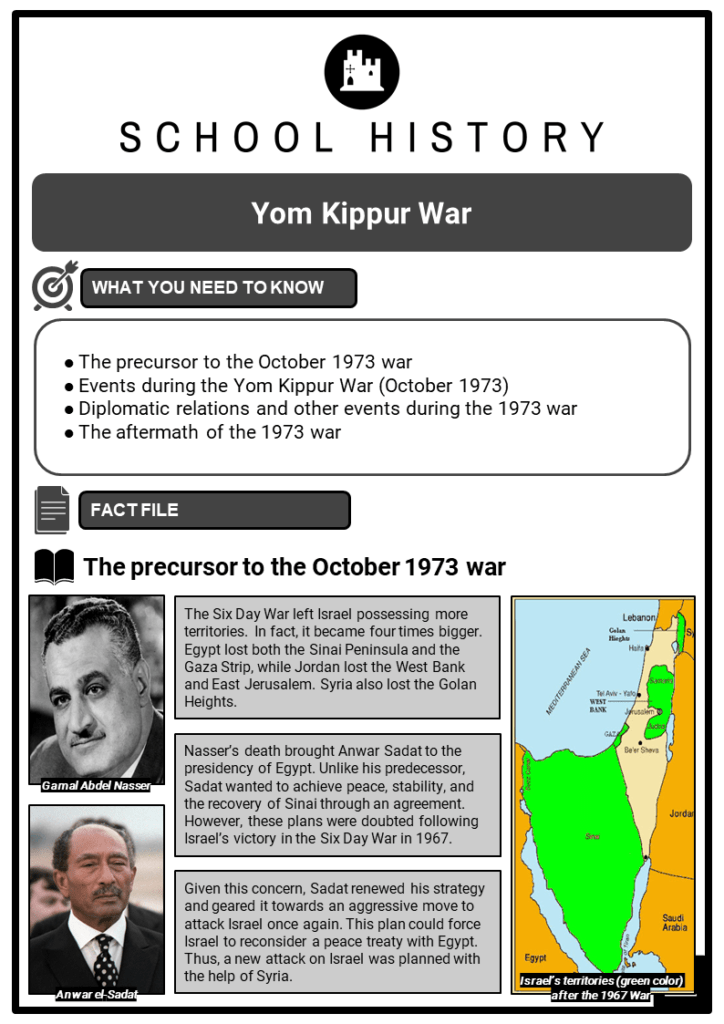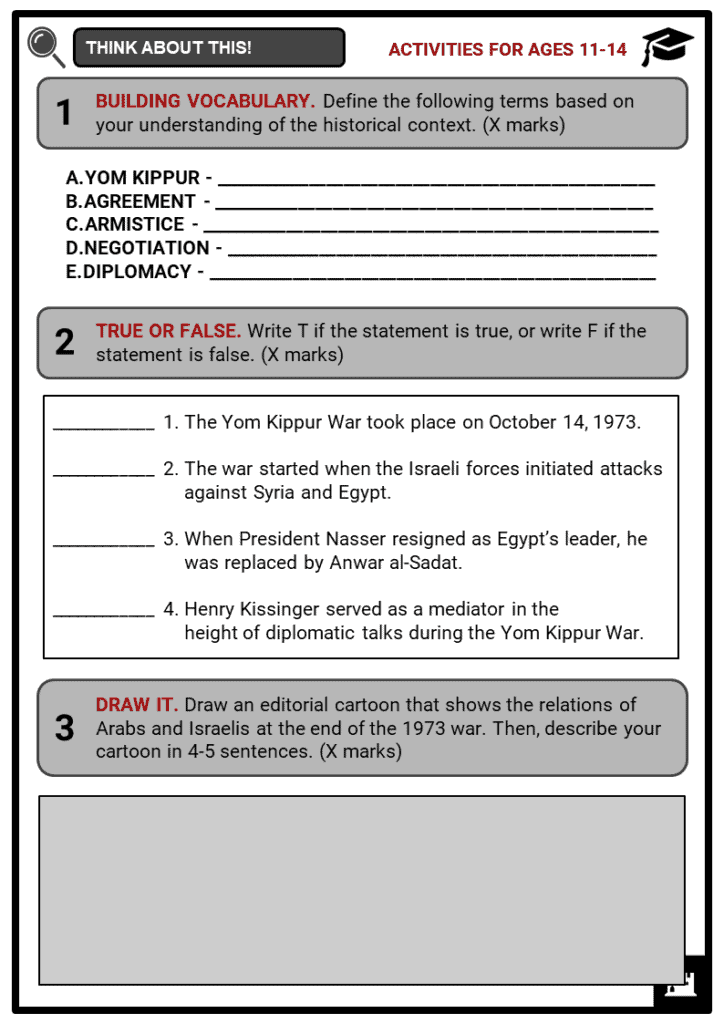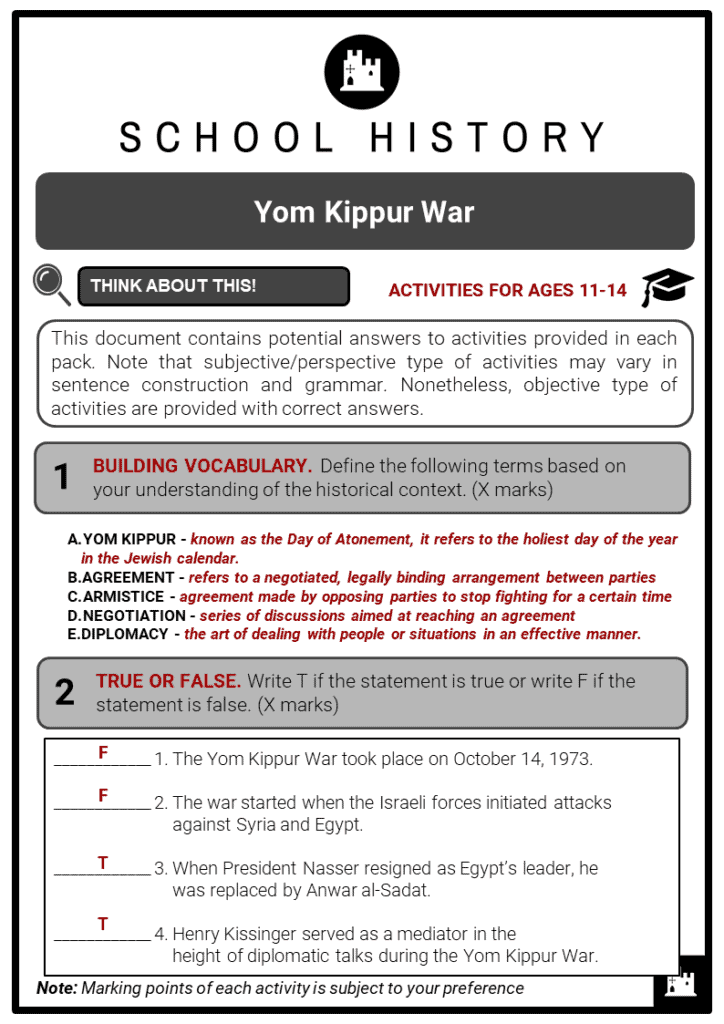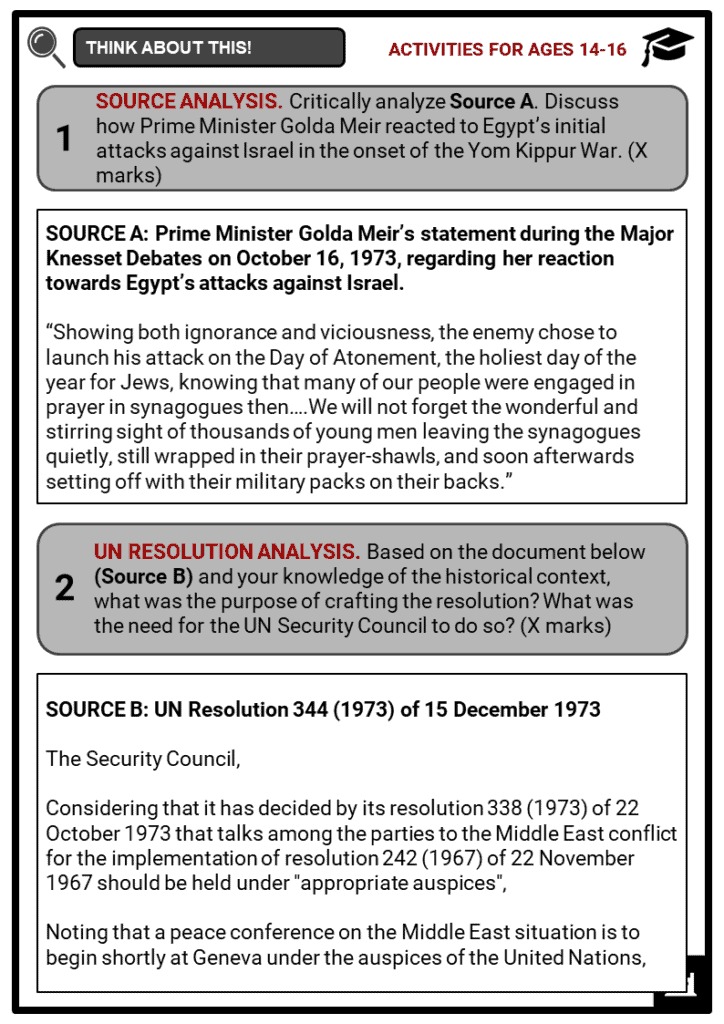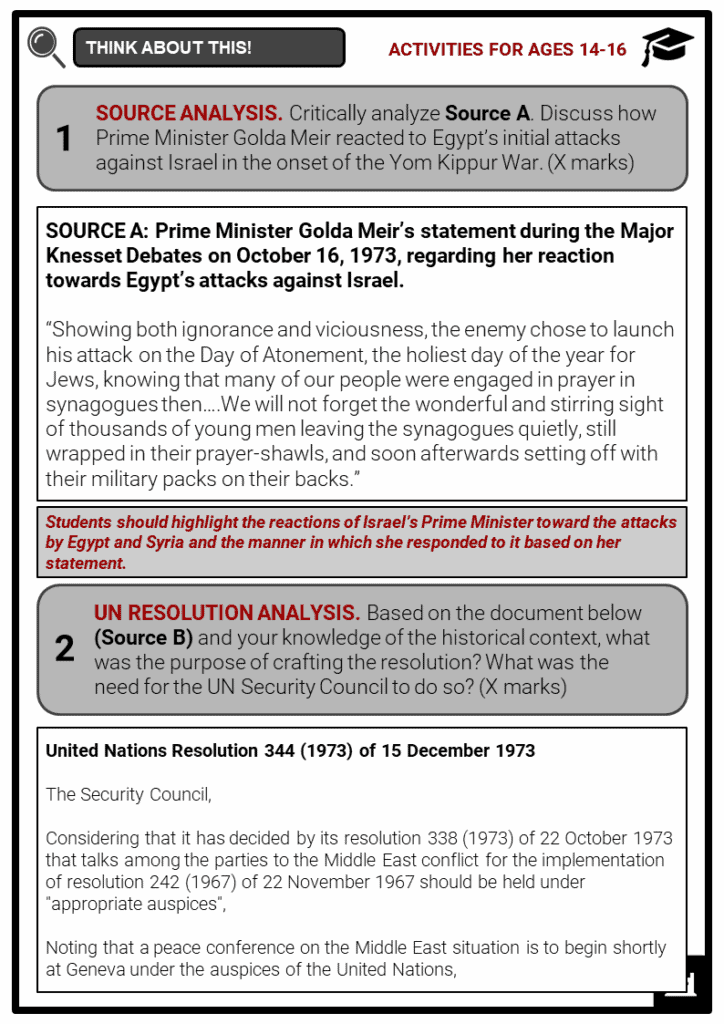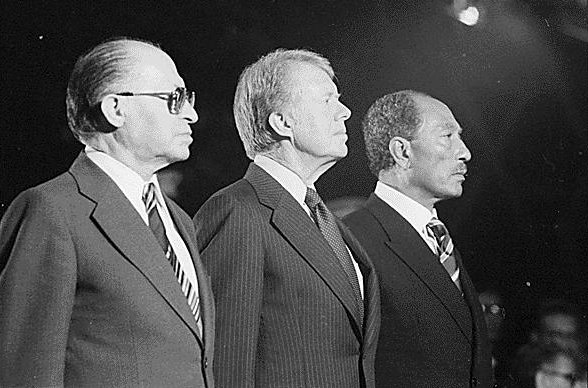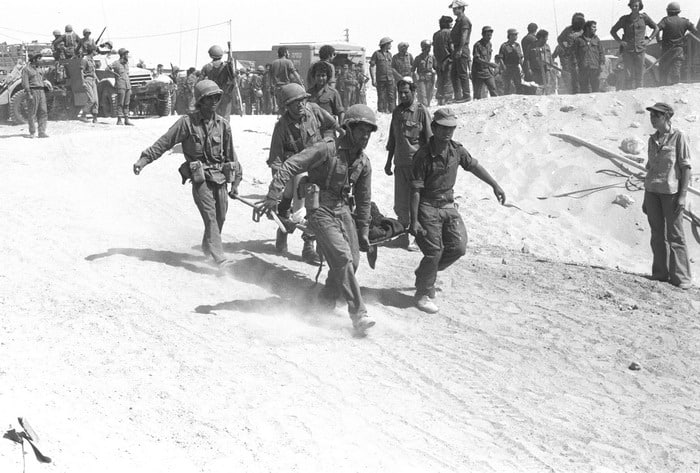Download Yom Kippur War Worksheets
Do you want to save dozens of hours in time? Get your evenings and weekends back? Be able to teach Yom Kippur War to your students?
Our worksheet bundle includes a fact file and printable worksheets and student activities. Perfect for both the classroom and homeschooling!
Table of Contents
Add a header to begin generating the table of contents
Summary
- The precursor to the October 1973 war
- Events during the Yom Kippur War (October 1973)
- Diplomatic relations and other events during the 1973 war
- The aftermath of the 1973 war
Key Facts And Information
Overview
The precursor to the October 1973 war
- The Six Day War left Israel possessing more territories. In fact, it became four times bigger. Egypt lost both the Sinai Peninsula and the Gaza Strip, while Jordan lost the West Bank and East Jerusalem. Syria also lost the Golan Heights.
- Nasser’s death brought Anwar Sadat to the presidency of Egypt. Unlike his predecessor, Sadat wanted to achieve peace, stability, and the recovery of Sinai through an agreement. However, these plans were doubted following Israel’s victory in the Six Day War in 1967.
- Given this concern, Sadat renewed his strategy and geared it towards an aggressive move to attack Israel once again. This plan could force Israel to reconsider a peace treaty with Egypt. Thus, a new attack on Israel was planned with the help of Syria.
Events during the Yom Kippur War (October 1973)
- October 6, 1973: The fourth Arab-Israeli war began when Arab armies made the first move.
- Egypt and Syria launched simultaneous air strikes and land attacks across the Suez, Sinai, and Golan Heights regions.
- At that time, Israeli forces were away from their posts to observe the Jewish holy day of Yom Kippur.
- Within three days, Israeli forces had to withdraw from their posts in the Golan Heights and Sinai due to Arab attacks.
- Egyptian forces pushed further into Sinai, but Israel’s forces were able to mobilize and kill the Egyptian soldiers.
- October 14, 1973: A major tank battle took place between Egypt and Israel in Sinai. Egypt’s tanks were heavily damaged.
Diplomatic relations and other events during the 1973 Yom Kippur War
- Egypt’s forces were weakened. Israel was able to cross the Suez in the south and get into Golan Heights, where they had driven Syrian forces out of their positions in the territory.
- Diplomatic talks soon began at the height of the war, and Henry Kissinger served as a mediator. Sadat capitalized on the Arabs’ attacks against Egypt, which drove peace negotiations.
- October 25, 1973: A ceasefire between Egypt and Israel was secured by the United Nations. Two days later, the Arabs accepted the armistice agreement.
- Two months later, in December 1973, a summit conference took place in Geneva, where Israel, Syria, Jordan, and Egypt were invited to finally usher peace agreement between the Arabs and Israelis.
- This effort was recognized by the UN Security Council Resolution No. 344. However, as Syria refused to attend the conference, it abruptly adjourned on January 9, 1974.
The aftermath of the 1973 war
- Compared to the previous Arab-Israeli wars, both parties experienced mixed fortunes as the war concluded. Israel may have won in the battlefield, but Egypt was successful in capitalizing its initial attacks to put forward a series of peace negotiations to address the conflict.
- Egypt’s Anwar Sadat was seen as a world figure and a hero for the Arabs. Meanwhile, in Israel, the people criticized the government for their lack of preparation during the war. The following year, Prime Minister Golda Meir and Defense Minister Moshe Dayan resigned from their posts.
- As a result of the war, the Middle East became the center of global attention, and fears of a looming oil embargo prevailed. The confrontation between Cold War superpowers (United States and the United Soviet Socialist Republics - USSR) continued to heat up.
Image sources:
[1.] https://upload.wikimedia.org/wikipedia/commons/f/f8/Begin%2C_Carter_and_Sadat_at_Camp_David_1978.jpg

